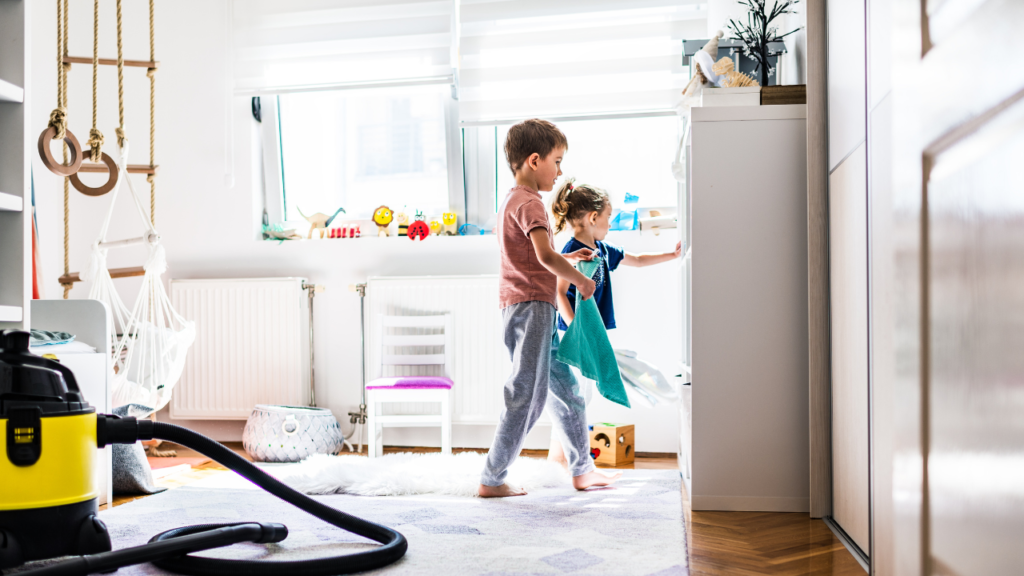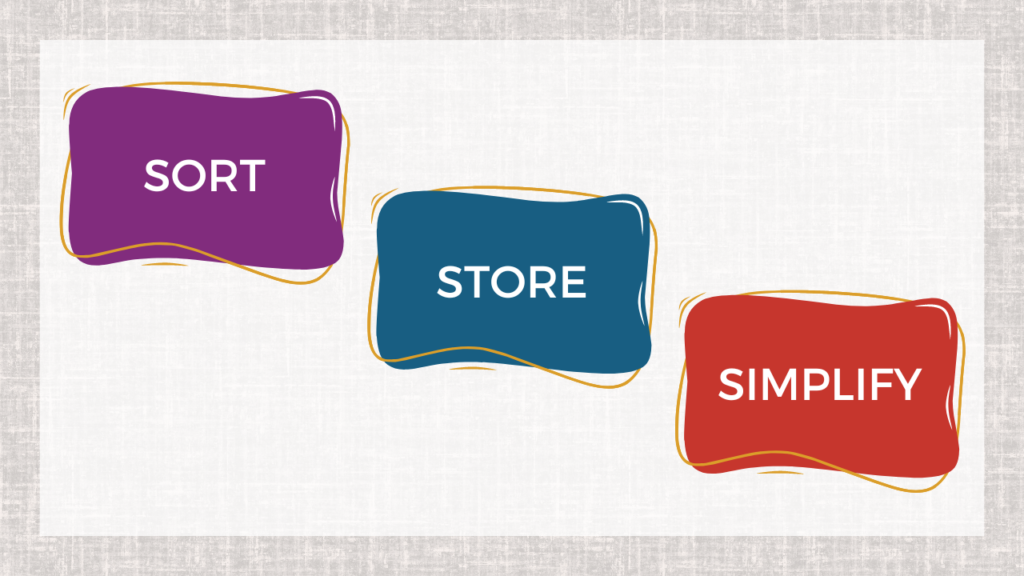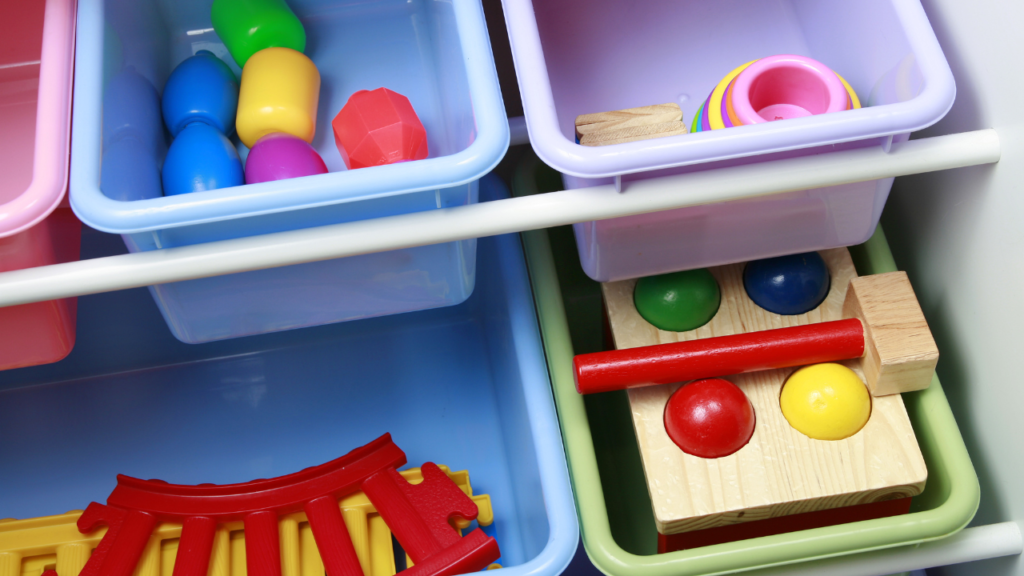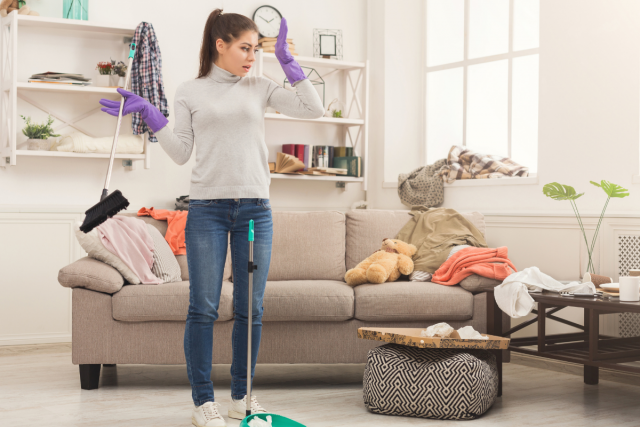This post contains affiliate links. Keep in mind that we may receive commissions when you click our links and make purchases. However, this does not impact our reviews and comparisons. We try our best to keep things fair and balanced, in order to help you make the best choice for you.
Share:
With the start of the new school year fast approaching, it’s time to declutter, deep-clean and organize the kids’s rooms. Can the kids find clothing during the morning rush? Where will they do their homework … or log on to their virtual classroom?
Seasonal events like birthdays, the holidays or a new school year bring fresh motivation to drive kids to get organized–and nowhere is the battleground more intense than in the children’s bedrooms.
Thanks to all the toys, books, and clothes in your kids’ room, keeping those spaces organized can be a total nightmare. With a little bit of effort and a good system, you can at least make some headway in controlling the chaos.
Here are four easy organization strategies to solve the clutter problem and bring order to kids’ rooms.
1. Instead of Bird’s Eye View, Take a Child’s Eye View

It is helpful to get down to your child’s eye level to help him or her get organized. Look at your child’s space, storage, furniture and possessions from his or her vantage point. The view may surprise you!
Your furniture and organizing systems as an adult don’t necessary translate well to children’s needs. For example, sticky dresser drawers are hard for small hands to manage, folding closet doors pinch fingers, closet hanging rods are out of reach, while adult hangers don’t fit smaller clothing.
In order to organize a child’s room, the solutions must fit the child. For younger children, try to remove closet doors entirely, lower clothing rods, and invest in child-sized hangers. Use floor-level open containers to hold toys, and light-short dresser to store socks and underwear.
Devise a simple daily checklist for maintenance. To organize a child’s room, tailor the effort to the child so they can help organize the room as well.
2. Bring the Child Into the Organizing Process

Resist the urge to wade into the bedroom mess alone, garbage bags flying and threats of “You will keep this room clean!” Instead, look at the organization process as a learning activity with the child, and put the focus on them. Professional organizer Julie Morgenstern, author of Organizing from the Inside Out, recommends that you view your role as that of organizational consultant to your child.
As his or her guide, survey what’s working, what’s not, what’s important to the child, what’s causing the problems, and why the child wants to get organized.
When you partner with your child, you stand a better chance of devising an organization system that makes sense to them. If they’re involved in the effort, children are able to better understand the organizational logic and maintain an organized room.
It is also very helpful for children to create a fun and doable (maintainable) routine into the family’s day. Add some music or make it into a game. If a child sees a task as fun, the least resistance you will likely receive from those involved.
“Morning Pickup” straightens the comforter, returns the pillow to the bed, and gets yesterday’s clothing to the laundry hamper.
“Evening Pickup” precedes dressing for bed, and involves putting away the day’s toys.
3. Sort, Store and Simplify Your Children’s Toys

Children’s rooms are usually small, often shared, and generally lack built-in storage. Yet these rooms are host to out-of-season and outgrown clothing, toys, and even household overflow from other rooms. Children can’t stay organized by themselves when the closet is crammed, the drawers are stuffed, and playthings cover each square inch of carpet.
Begin with clothing: sort it out! Next, store the out-of-season or outgrown clothing elsewhere. Finally, simplify! Purge the clothes, toys and other items they don’t use or need at this point. Remove the extras so the remainder can stay neat and orderly in the available space.
For younger children, creating a toy library can help keep the children organized. Grouping like items together in individual bins and cubbies can be a lifesaver. Use plastic bins with lids (these are my favorite) to store small toys like Lego bricks, or consider fabric bins for stuffed animals and clothing.
Some rainy day, bring out the toy library, swapping the stored toys for other playthings that have lost their savor. The stored toys will have regained their interest and freshness–and they won’t have been underfoot in the child’s room.
4. Make It Easier to Put Something Away Than It Is to Get It Out.

For example, store picture books as a flip-file, standing upright in a plastic dishpan. The child flips through the books, makes his selection, and tosses the book in the front of the dishpan when he’s done.
Compare a traditional bookcase, where little fingers can pull down a whole shelf faster than they can replace one book. Build the effort into the getting out, not the putting away.
Conclusion
The usual peaks and valleys approach to room cleaning can vex and frustrate children. Their room is clean, they play, and suddenly, their room is back to messy normal. Building routines into the family’s schedule at the start of the school year will keep disorder from becoming overwhelming.


